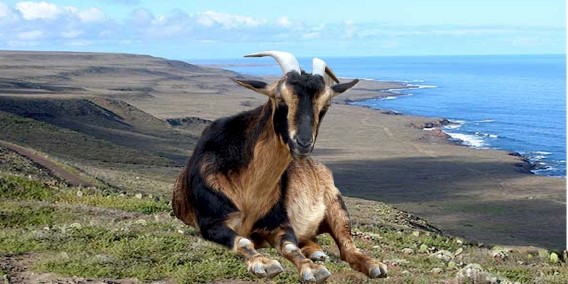San Clemente Island Goats are
derived from feral goats isolated on San Clemente Island, one of the Channel
Islands off the coast of California. They are thought to be descended from goats brought
to the island by Spanish missionaries and settlers; breeds such as the La
Blanca Celtiboras, the La Castellana Extremenas, and later the more common
dairy and meat goats of Spain, the Malaguenas and Murcianas.
The U.S. Navy became
responsible for the island in 1934. Hunting and trapping were allowed, but in
1972, when a survey concluded that there were 11,000 goats on the island, a
systematic removal program was begun. By 1980 an estimated 4,000 goats still
remained on the island.
The Navy then proposed a
shooting program to be conducted from helicopters, but it was blocked in court
by an animal welfare group, the Fund for Animals. This group used helicopters
and nets to capture the goats, then took them off the island and found homes
for them across the country. Practically all the goats were removed from the
island in this manner.
San Clemente goats are relatively small, close
to the maximum standard for dwarf breeds. They are a meat breed, though
uncommonly fine-boned and deer-like. They are horned in both sexes. Although
the island population once exhibited a wide range of colors and color markings,
the goats are now mostly red or tan with black markings.
